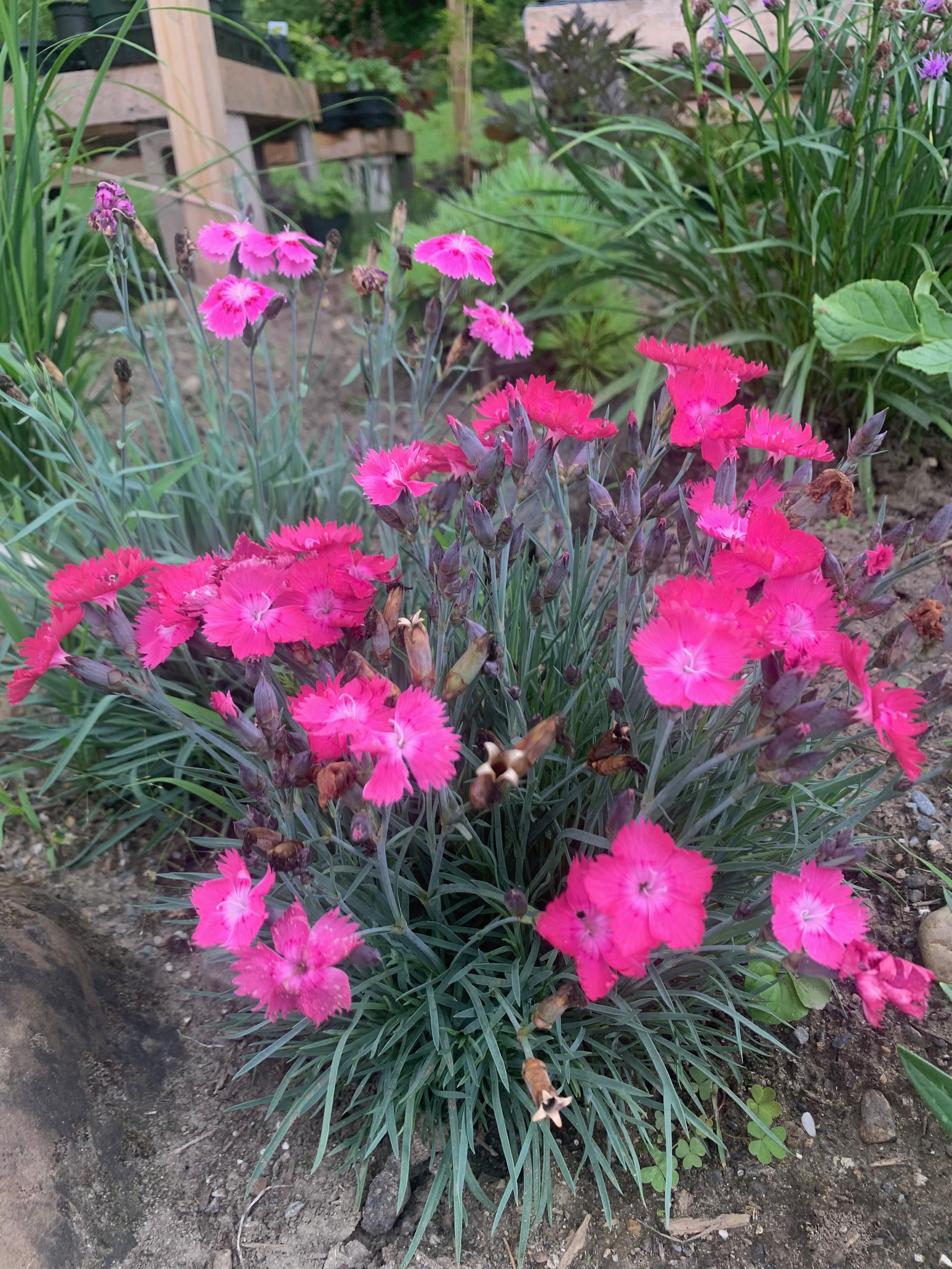Dianthus (Caryophyllaceae)
Known as pinks, not for their color, but for the deeply cut, frilly flower petals, The term ‘pinked’ is an old word for cutting decorative, frilly edging in clothes etc. which the flowers mimic. There are about 340 species distributed mostly through Europe and Asia with a few North American species. Some species are noted for their strong spicy fragrance. We have been growing several species. Some are short lived, seeding around for years to come. Some of the best are the more alpine species that form tidy mounds of evergreen foliage. The best ones are more challenging to grow, especially in our climate. Most require a sunny site with poor, well drained soils.
AVAILABLE THIS YEAR
D. arenarius ‘Little Maiden’ - tidy mound of grassy, evergreen foliage, white, aromatic flowers on wiry stems to 10”, mid-summer. Choice!
D. deltoides ‘Arctic Fire’ - Mat forming perennial with linear foliage, white flower with a pink eye, long flowering if cut back after first flush. Also controls unwanted seeding.
D. gratianopolitanus ‘Grandiflorum’ - Cheddar pinks, cushiony mound of blue-green foliage, fragrant, fringed flowers in pink and rose, May - June.
Known as pinks, not for their color, but for the deeply cut, frilly flower petals, The term ‘pinked’ is an old word for cutting decorative, frilly edging in clothes etc. which the flowers mimic. There are about 340 species distributed mostly through Europe and Asia with a few North American species. Some species are noted for their strong spicy fragrance. We have been growing several species. Some are short lived, seeding around for years to come. Some of the best are the more alpine species that form tidy mounds of evergreen foliage. The best ones are more challenging to grow, especially in our climate. Most require a sunny site with poor, well drained soils.
AVAILABLE THIS YEAR
D. arenarius ‘Little Maiden’ - tidy mound of grassy, evergreen foliage, white, aromatic flowers on wiry stems to 10”, mid-summer. Choice!
D. deltoides ‘Arctic Fire’ - Mat forming perennial with linear foliage, white flower with a pink eye, long flowering if cut back after first flush. Also controls unwanted seeding.
D. gratianopolitanus ‘Grandiflorum’ - Cheddar pinks, cushiony mound of blue-green foliage, fragrant, fringed flowers in pink and rose, May - June.
Known as pinks, not for their color, but for the deeply cut, frilly flower petals, The term ‘pinked’ is an old word for cutting decorative, frilly edging in clothes etc. which the flowers mimic. There are about 340 species distributed mostly through Europe and Asia with a few North American species. Some species are noted for their strong spicy fragrance. We have been growing several species. Some are short lived, seeding around for years to come. Some of the best are the more alpine species that form tidy mounds of evergreen foliage. The best ones are more challenging to grow, especially in our climate. Most require a sunny site with poor, well drained soils.
AVAILABLE THIS YEAR
D. arenarius ‘Little Maiden’ - tidy mound of grassy, evergreen foliage, white, aromatic flowers on wiry stems to 10”, mid-summer. Choice!
D. deltoides ‘Arctic Fire’ - Mat forming perennial with linear foliage, white flower with a pink eye, long flowering if cut back after first flush. Also controls unwanted seeding.
D. gratianopolitanus ‘Grandiflorum’ - Cheddar pinks, cushiony mound of blue-green foliage, fragrant, fringed flowers in pink and rose, May - June.


